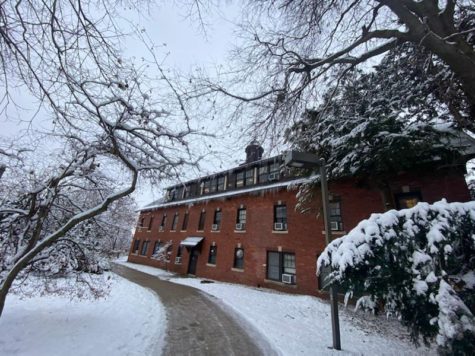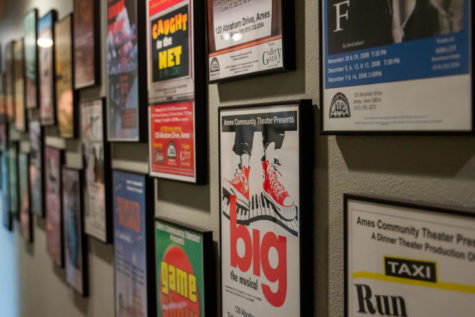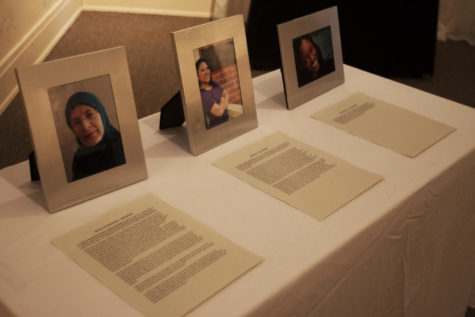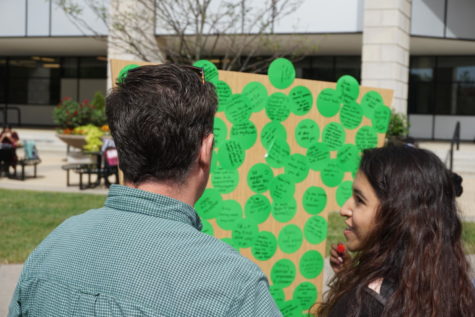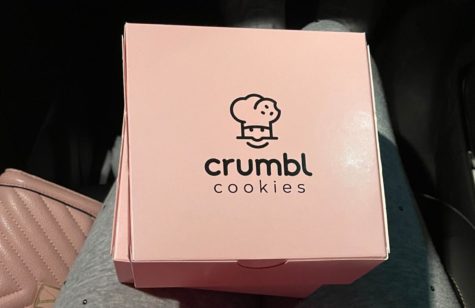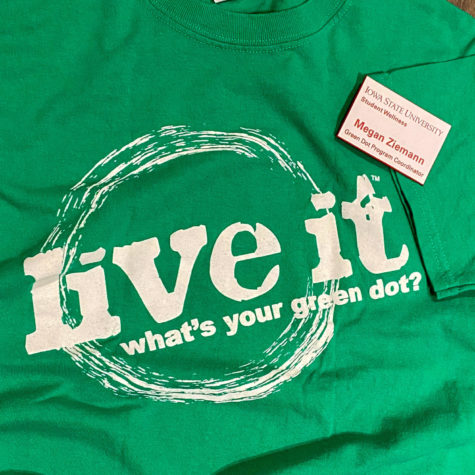Hogue brings New York state of mind to Iowa State
November 4, 2014
Dustin Hogue grew up only blocks from Madison Square Garden, but he had never been inside.
“I always said my first time being there, I wanted it to be on the court,” Hogue said.
Hogue lived out that lifelong dream on the evening of March 28, 2014.
He and his fellow Cyclones traversed a long and arduous path that had already claimed the season of one of their leaders, Georges Niang, by way of a broken foot in the previous game.
Despite its hardships, the road to the Final Four had been paved with two ISU wins and had led Hogue home again to the bright lights of the Big Apple and to center court at the Mecca of American basketball.
The prize was a Sweet 16 matchup with UConn.
But as the final buzzer sounded on the East Regional Semifinal, and the crowd erupted furiously, casting their arms to the sky and bellowing the elated cries of the victorious, all Hogue could do was hold his head in his hands and fight the tears.
His dream had become his nightmare.
“I was hurt,” Hogue admitted. “I did not want to look at or talk to anybody. All I could do was cover my face. That was a tough thing to do, to lose.”
Hogue’s all-star caliber performance of 34 points, six rebounds and two steals provided him little solace as he slumped out of the Garden in defeat.
But it was not in Hogue’s nature to lament for long and his thoughts soon turned to the upcoming season.
“I knew that was not my last shot at Madison Square Garden,” Hogue said. “I knew it was not my last Sweet 16 visit either. As soon as I walked off the court, I knew I was not going to let that feeling overwhelm me again.”
As he and his teammates made their way out into the cold New York City evening, Hogue’s resolve was strengthened as the team bus rolled through the streets on which he was raised.
“New York is kind of different from a lot of other places,” Hogue explained. “Just interacting with people, everybody has a certain New York attitude and everybody is a little tougher. It helps build you up.”
The construction of Hogue’s character began at an early age growing up in Yonkers, New York, located near the South Bronx.
Hogue was smaller than many of his counterparts during his youth, a problem exacerbated by the streetball culture in which he mastered the game he loves, as it pitted him against older and even more developed competition for most of his childhood.
Hogue spent much of his young life learning basketball the hard way on the hard courts at Culver Park and Pelton Park near his neighborhood in Yonkers, where fat lips and scraped, bloodied knees were only the most minimal of battle scars.
As he got older, he began to venture out to nationally noted courts like Rucker Park in Manhattan.
His streetball career culminated at Midnight, a tournament staged in New York City by local rapper Jadakiss, when word of some heavy-hitting high schoolers reached the ears of the AND 1 Mixtape Tour.
The streetball legends jaunted across the city to Yonkers to take on Hogue and his band of youthful hoopsters, who were ripping through the competition.
Even though AND 1 got the better of his team by a margin of a few points, Hogue put up a fight, because a fighter is what he has always been.
“You would not get respect unless you were playing hard, so I would go against guys twice my size and do what I needed to do to play,” Hogue said. “That is where this heart comes from. It is a matter of who wants the ball more, and I think that carried over to Division I.”
Division I ball was not a place Hogue ever imagined he would be carrying anything as a high school player with nothing but some talent and a few quiet hopes.
An assault on those hopes commenced when it became clear that the noteable basketball programs littered across the Northeast were not interested in pursuing his services. Hogue said that not even the smaller Division III schools in the area were spending much time looking his way.
“I have always been humble,” Hogue said. “In my city, I had a pretty big name, but Yonkers is just one place. Coming out and trying to play in college was tough for me. Not to be recruited in your hometown kind of discourages you.”
Still, Hogue believed, and with good reason. He ended up at Indian Hills Community College in Ottumwa, Iowa, and to this day, it is still a sequence of events he has trouble explaining.
“I never pegged myself as a guy who was going to land in Iowa,” Hogue laughed. “My coach at Indian Hills, before I went there, told me it was just like New York. So, naive me, I thought, ‘If Iowa is just like New York, then I will go.’
“Then I actually came here and saw cows and farms and gravel roads, things I had never seen before. It was kind of a culture shock.”
Hogue battled the shock in two ways.
The first was to isolate himself perhaps a little more than the average person, but that is merely his nature.
Hogue described himself as a thoughtful and contemplative person who many times prefers solitude to the spotlight.
“I need time to myself,” Hogue explained. “It is soul-searching, I guess you could say. I learn a lot about myself by being by myself. It helps me realize what I need to work on. It is beneficial for me. It is how I work.”
That is not to say Hogue is a recluse, and his penchant for solitude makes the relationships he does develop, like the ones with his teammates, fiercely important to him.
Teammate Naz Long referred to Hogue as “probably the biggest goofball on the team.”
“If you are a friend in need, [Hogue] will do whatever he can to be there for you,” Long said. “He is an all-around great guy and one of the best teammates I have ever had.”
The second way Hogue dealt with the transition to Iowa was to stay in contact with his older brother, Douglas Hogue, a former NFL linebacker and Dustin’s primary source of both support and rivalry growing up.
“Rivalry is an understatement,” Hogue said. “But [Doug’s] football attitude kind of instilled in me the attitude I have on the court to be tougher than the next guy and never let a guy punk you. If you want something go get it. He is why I go after every board like it is my last one.”
Hogue added that aside from his family, the greatest sources of inspiration to win a national title and one day play in the NBA stand right beside him every day in practice.
“It is a brotherhood I have right here,” Hogue said. “Without my brothers, I would not be anything.”
Hogue’s competitive spirit at Indian Hills was enough to turn the head of ISU basketball coach Fred Hoiberg, and from there, Hogue said, the rest fell into place.
Now entering his final season of eligibility, Hogue said both he and his team have some unfinished business that needs tending.
“I plan on leading the Big 12 in rebounding this year,” Hogue said. “I let that slip from me last year, but I am not going to let that happen again. Guys’ eyes light up when they see that I am 6’6″ because they are 6’9″ or 6’10”. They do not realize.”
As far as his plans for the team are concerned, Hogue is not at a lack for motivation.
“Last year we got close, but nobody thought we would be there,” Hogue said. “Everybody was doubting us along the way, and that is a slap in the face in my opinion. Being voted fifth [this year] in the Big 12 is unbelievable to us. Anything short of the national championship is going to hurt.”
Hogue’s farewell ride through the ranks of college basketball may well carry him back to his New York roots, just as his inaugural venture swept him away to Iowa, with a little help from a fib perpetrated by a community college basketball coach.
It would only be fitting. After all, Hogue had to come to Ames before he could enter the Garden.
“Who knows?” Hogue asked. “Maybe Iowa has something I have needed my whole life.”







